Q: Could you explain about the pipe organ?
Yorisada Tokugawa imported this pipe organ from London in 1920, and installed it in Nanki-Gakudo that was newly built in Azabu for that purpose. Although the pipe organ was not damaged by the Great Kanto Earthquake in 1923, the hall itself was totally destroyed, so the organ could no longer be set on the floor. Therefore, Tokugawa donated the organ to Geidai's Sogakudo in 1928. However, the organ got really old at the time of the relocation. Geigai decided not to restore the organ. So, 87 pipes were lost. The principle of restoring cultural properties is that, basically, new materials are not used in relocation and reconstruction work, but those properties are restored using original materials and supplementing what are missing. However, the expenses piled up because we tried to restore what Geidai did not do so. Since Taito City residents said that they would carry out fundraising activities and help restore the pipe organ, we organized "Sogakudo no Pipe Organ wo Yomigaeraseru Kai," or organization for restoring Sogakudo's pipe organ, and conducted a fundraising campaign. Uchiyama, the head of Taito City, also participated in the campaign, standing on streets. As a result, the campaign raised about 10 million 500 thousand yen. A variety of people, including Shomyo Urai, the chief steward of Kan-eiji Temple, and housewives, contributed to the campaign. This pipe organ could be restored through the help of people. (continued in the right column)
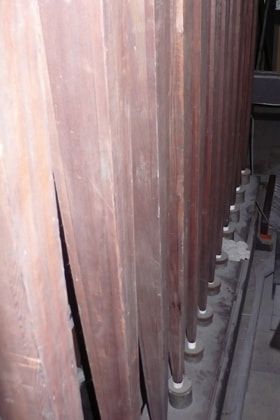
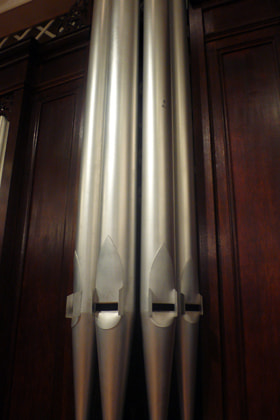
The relocation and reconstruction of Sogakudo was completed in March 1987. Then, it took 6 months to restore the pipe organ, which was finished in September. Sogakudo with the pipe organ was officially opened in October 1987.
Although the organ has 1,338 pipes now, it had 1,379 pipes when it was created. These beams are not decorations, but support the ceiling. The reason why the ceiling is vaulted is that the music hall was constructed on the second floor. If the ceiling space is incapacious, an audience feels stuffy. So the space was widened, and ventilation holes were also created in order to discharge hot air. The high ceiling makes it possible to easily see performances, and an audience feels comfortable with it. The acoustics are also good. If the ceiling and floor are parallel, sounds are echoed, creating bad acoustics. The ceiling was designed like this in order to obtain better acoustics. Also, corners of walls were rounded. The hall was constructed while taking acoustics into account. It is said that Sogakudo itself is an instrument because its acoustics are well balanced. Now, the pipe organ or harpsichord is played before a public audience on Sundays.
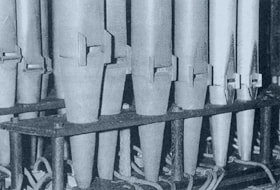
These metal pipes were made of an alloy of lead and tin. Two pipes on the right were newly made.
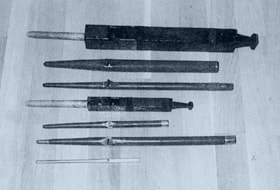
A variety of pipes used for the second keyboard
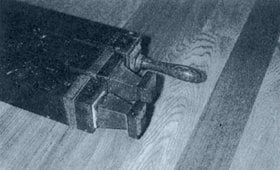
Wooden pipes - two pipes on this side are older.
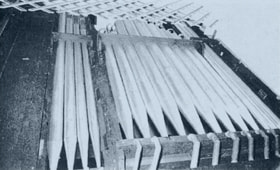
Back of front pipes
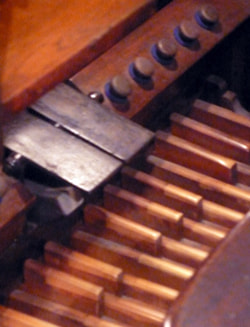
Pipe organ's pedals on which its long history is inscribed
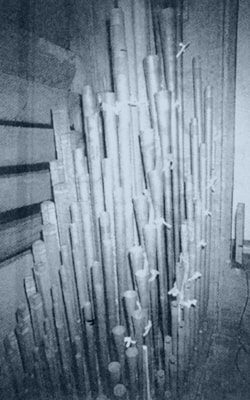
Restored pipes
A total of 1,379 pipes were originally mounted, but 87 pipes were missing. Those old pipes were restored, and new pipes were made out of the same material and constituent.

Pipe organ's pedals on which its long history is inscribed

Restored pipes
A total of 1,379 pipes were originally mounted, but 87 pipes were missing. Those old pipes were restored, and new pipes were made out of the same material and constituent.








